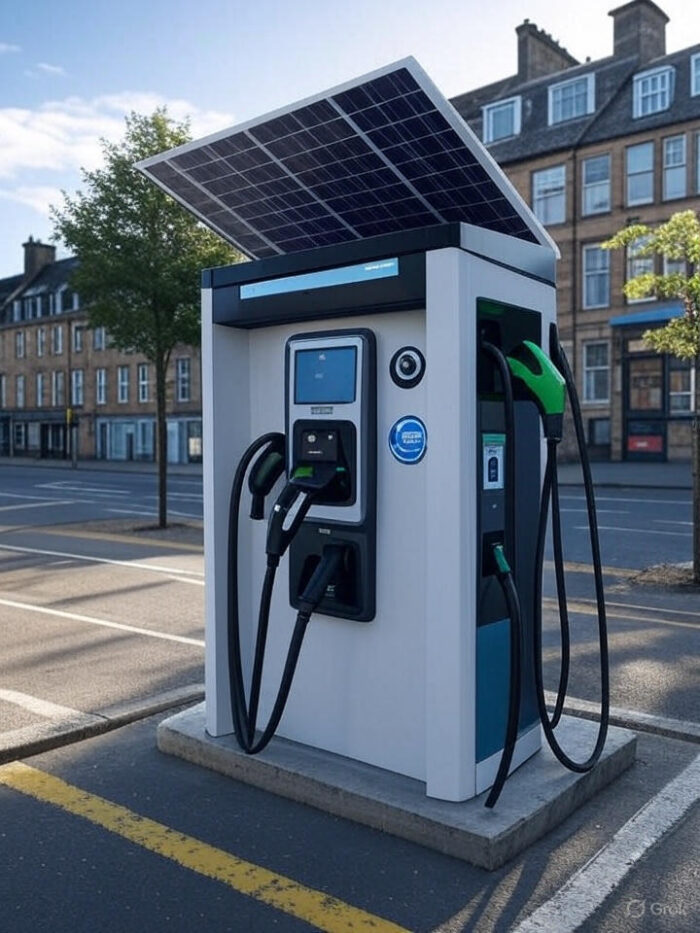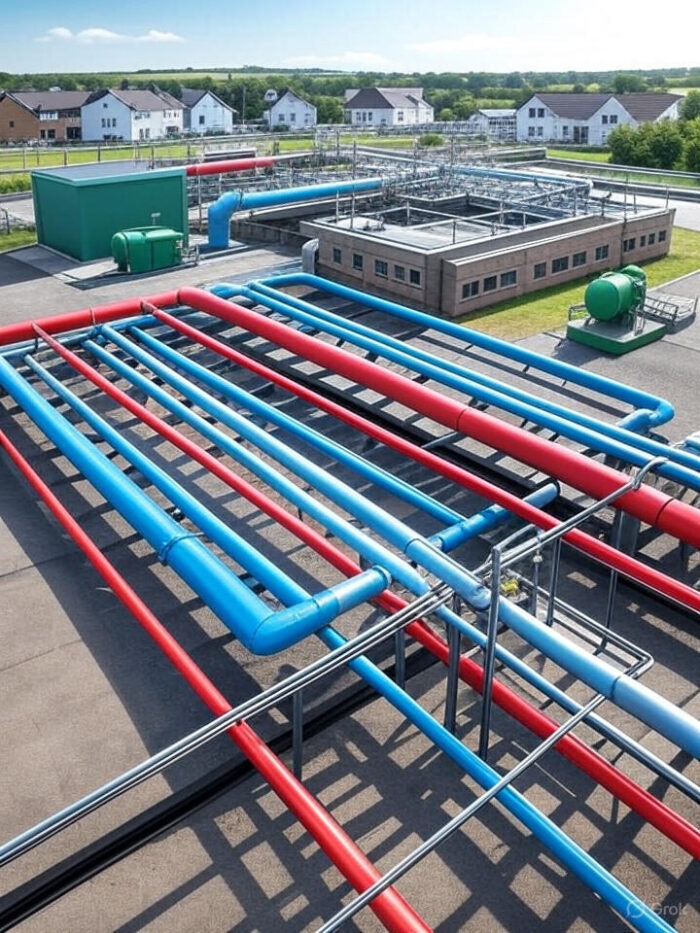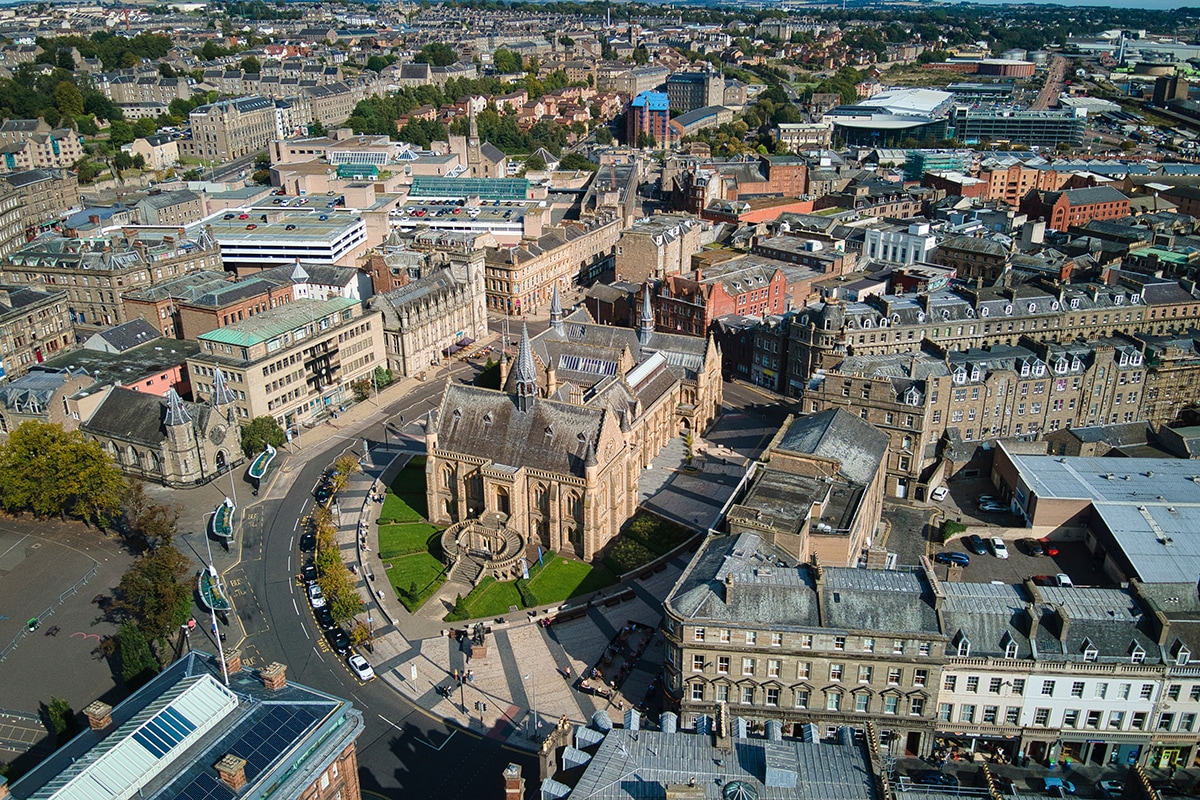


Scotland’s eight cities—Aberdeen, Dundee, Dunfermline, Edinburgh, Glasgow, Inverness, Perth, Stirling —and their regions are integral to the nation’s economic and social fabric and their infrastructure and connectivity are crucial for sustainable growth and development.
Digital Connectivity
Scotland is making significant strides in digital connectivity. The rollout of 5G and full-fibre broadband is transforming cities into digital hubs. CityFibre’s Gigabit City Investment Programme is a key initiative, aiming to provide full-fibre infrastructure to cities up and down Scotland and the wider UK. This programme supports the Scottish Government’s goal of ensuring superfast broadband access for all premises by 2027. Stirling became the UK’s first completed Gigabit City in 2020.
Green Data Centre Opportunities
The rise of digital services has increased demand for data centres exponentially. Scotland’s cool climate and renewable energy resources make it an attractive location for green data centres. These facilities use energy-efficient technologies and renewable energy sources to minimise their environmental impact. Cities across Scotland are exploring opportunities to develop such centres, supporting the digital economy while aligning with sustainability goals.
Road, Rail, and Airport Connectivity
Transport infrastructure in Scotland’s cities is robust and continually improving. Scotland’s road network spans approximately 35,400 miles (56,959 km), with major road networks like the M8 connecting Glasgow and Edinburgh facilitating efficient travel and commerce. Rail connectivity is equally vital, with cities like Glasgow and Edinburgh serving as central hubs in the UK’s national rail network. The Caledonian Sleeper service, the overnight sleeper train service also provides a convenient connection between London and many of Scotland’s cities. The ScotRail-Network Rail Alliance is investing in electrification and new rolling stock to enhance service reliability and capacity.
Air travel is supported by major airports in Edinburgh, Glasgow, and Aberdeen, which offer both domestic and international flights including regular flights to international business hubs such as London, Frankfurt, and Amsterdam. With London only an hour away and Frankfurt only 90 minutes, it’s easier than ever to make that all important meeting. Further airports are located in Inverness and Dundee. Scotland’s airports are critical for business travel and tourism, linking Scotland to global markets.
Energy Infrastructure
Scotland’s commitment to renewable energy is evident in its infrastructure. The country is a leader in wind energy, with numerous onshore and offshore wind farms. Cities are increasingly integrating renewable energy sources into their grids, supporting Scotland’s ambitious climate targets.
Place-Based Decarbonisation and Net Zero Neighbourhoods
Efforts to decarbonise urban areas are gaining momentum. Initiatives like the Low Carbon Infrastructure Transition Programme (LCITP) support projects that reduce greenhouse gas emissions. Cities are developing net zero neighbourhoods, focusing on energy efficiency, sustainable transport, and green spaces. These neighbourhoods aim to create healthier, more sustainable urban environments.
Local Heat and Energy Efficiency Strategies (LHEES)
LHEES, area-wide plans for improving building energy efficiency and decarbonising heat, are crucial for Scotland’s energy transition. These strategies provide a framework for improving energy efficiency and reducing carbon emissions in buildings by 2045. Cities are implementing LHEES to identify and prioritise areas for energy improvements, ensuring a coordinated approach to decarbonisation.
In conclusion, Scotland’s eight cities and their regions are at the forefront of infrastructure and connectivity advancements. From digital and transport networks to energy and decarbonisation initiatives, our city regions are building a sustainable future, driving economic growth, and enhancing the quality of life for their residents.

Copyright © 2025 Scottish Cities Alliance. All rights reserved.





